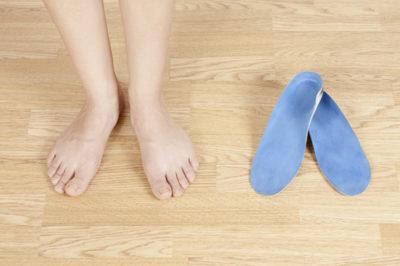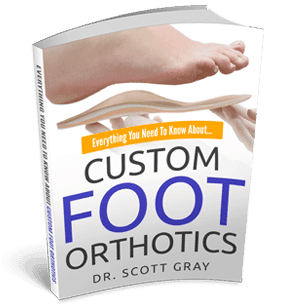5 Things to Look for In a Custom Foot Orthotic
If you’re interested in purchasing a pair of foot orthotics but not sure what you should be looking for then continue to read below as the top five things to look for in a great foot orthotic are disclosed.
Seeing our Doctors of Physical Therapy in Fort Myers Florida can help discern if you need customs orthotics.
What Exactly Is a Foot Orthotic Anyway?
A foot orthotic is a “shoe insert” or a fabricated device that can slip into your shoes or sandals.
It’s main goal is to help alleviate pain and joint mal-alignment but to ultimately enhance human function.
For instance, whether you’re a mom looking to be able to walk further without knee or foot pain, a foot orthotic may help.
Similarly, if you’re a runner who has increase pain in your feet, a foot orthotic may be the solution you’re looking for, too!
Regardless of your daily or sport activities, a great custom foot orthotic should help make it easier and have less pain doing it!
Some of the Other Benefits of Foot Orthotics Are:
✔ Flattening of the arch
✔ Reduce pressure on different parts of your feet
✔ Limit compression through your joints
✔ Enhance your balance and joint flexibility
✔ Plus much, much, more
Part 1: A Deep Heel Cup
The foot consists of three major parts or sections; the rearfoot, mid foot, & forefoot.
Although all sections of the foot are very important to human function, the rearfoot is the igniter or most important for optimal function of the foot and rest of the body.
The rearfoot is important because it controls the amount of pronation or supination of the foot.
In other words, its controls how much your arch can flattens or opens up.
The problem with most orthotics is that they promise an array of benefits but the majority of them don’t have a deep heel cup.
A deep heel cup is essential because it helps stabilize the foot.
For instance, if you have a foot that pronates excessively, a deep heel cup is needed to control the excessive amount of motion. The heel cup restricts this abnormal motion.
If the heel cup is too shallow the foot will never function like it needs to and can result in further pronation, knee pain, unsteadiness on feet, etc.
“A Deep Heel Cup is Essential to Limiting Excessive Pronation
or Supination of the Foot”
Part 2: Forefoot Posting
Although the rearfoot is really important to having a normal walking gait and enhanced function, the forefoot also plays a role.
For instance, when the forefoot is mis-aligned upward or downward, it can cause the rearfoot to compensate more by further pronating or supinating excessively.
Although a deep heel cup is the first step in reducing abnormal motion as noted in part one, forefoot posting is also essential if the forefoot has abnormal positioning.
Forefoot posting involves prevention of the upward or downward motion.
A great foot orthotic will have this built into it to help alleviate pain, stiffness, and dysfunction.
Below is a simple example of a forefoot that is mis-aligned
and a sample of foot orthotic:


GET YOUR FREE REPORT
Top ways that how foot orthotics can help you
Part 3: The Foot Orthotic Is Made With a Plaster Mold
If you go to any shoe store, they’ll have you stand on a fancy device that shows where you’re putting your pressure on your feet.
Although this may have its benefits, a plaster cast or mold is the gold standard to getting a foot orthotic that is custom and specific to your feet.
A plaster mold can be taken by any foot professional such as a physical therapist or ped orthotist.
The plastic mold is a sample architecture of your foot.
It will show the professional what position your rear foot and forefoot is positioned in and how deep or shallow to make your forefoot posting or rear foot heel cup.

Part 4: Has “Cut Outs” to Reduce Pressure
One of the main purposes of a foot orthotic is to reduce stress and strain on specific parts of your feet.
Whether you have pain on the ball of your foot, your big toe, or by your heel, a cut out can help redistribute pressure adequately throughout the foot and reduce pain
A great custom foot orthotic contains this essential component and can be depicted after you have a plaster mold of your foot in addition to assessment of your feet.
Part 5: Full Length Orthotic
A full length orthotic refers to having a “shoe insert” made from the heel of the foot all the way to the toes.
Some orthotics on the market only consist of from heel to the mid-part of your foot.
A full length orthotic is more beneficial because it helps control all motions at your entire foot.
It also allows for cut outs, forefoot posting, and enhanced comfort for the patient.
If the foot orthotic is only half the length ( as many are in shoe stores), the excessive pronation or supination can’t be accounted for.
“A Full Length Orthotic Helps Mitigate Excessive Motion At All Parts of the Foot”
Want to See How We Can Help You?
Claim A Free 20 Minute Discovery Visit….
Conclusion:
A custom foot orthotic can help alleviate pain, reduces stiffness, and enhance function of the human body.
A great custom foot orthotic should have these five essential components: a deep heel cup, forefoot posting, cut outs, be full length, and be made using a plaster mold.
If any of the following components are missed, your foot may not function the way it may need to.
Call our office at 239-223-0484 and schedule your appointment today!
We offer Physical Therapy in Fort Myers, FL, and Physical Therapy in Cape Coral, FL.
About Author: Dr. Scott Gray
Dr. Scott Gray is an internationally recognized and expert physical therapist specializing in sport, athletic, and back and neck injuries. He is the inventor of a revolutionary form of treatment called the GRAY METHOD. This type of treatment unlike others, addresses the CAUSE rather than just your SYMPTOMS with a full-body approach.




